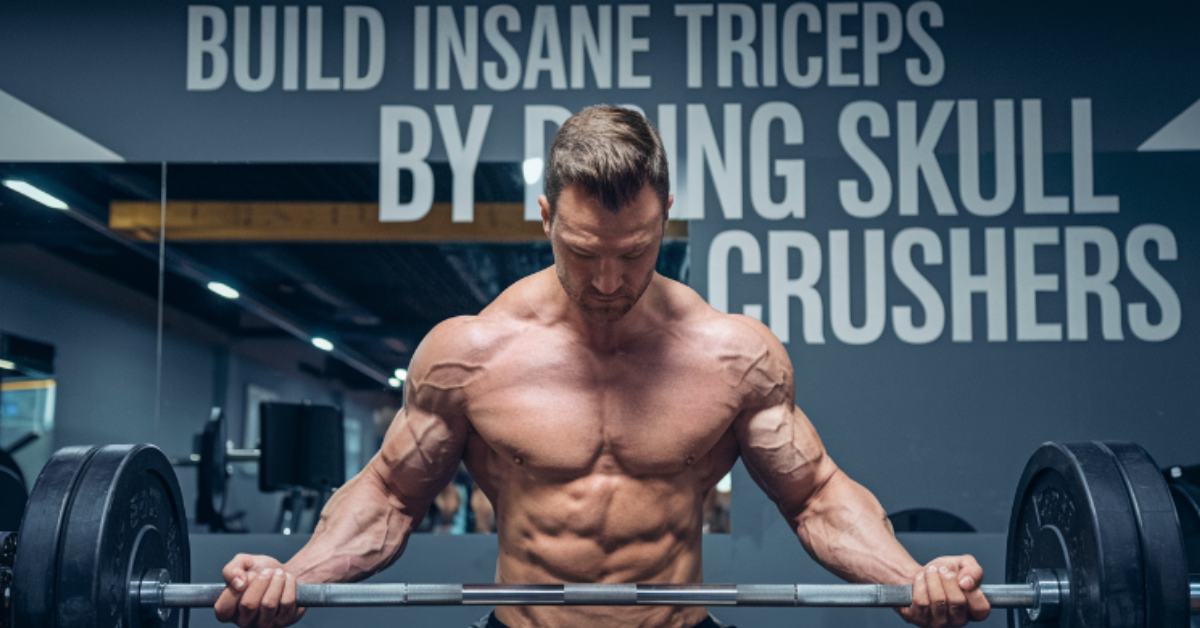HEALTH
Exploring Fitosterina: What You Need to Know In 2024

Let’s dive into the secrets of Fitosterina, those amazing natural plant compounds that do wonders for our health. Fitosterina, or plant sterols, are like cholesterol but come from plants and offer loads of health perks.
You’ll find these amazing compounds in everyday plant-based foods like nuts, seeds, whole grains, fruits, and veggies.
By munching on these goodies, you’re boosting your Fitosterina intake naturally, which is great for your overall well-being.
So, let’s dive into the world of Fitosterina. We’ll kick things off by understanding what they are and where to find them, making it easy to grasp their importance for our health.
Choosing the Right Fitosterina Supplement: Your Guide to Better Health
When picking out the perfect phytosterol supplement, there are a few important things to keep in mind.
- Research reputable brands that prioritize high-quality ingredients and undergo third-party testing for purity and potency.
- Consider your specific health goals and choose a phytosterol supplement that aligns with your needs, whether it’s supporting heart health or reducing inflammation.
- Evaluate the dosage form options available, such as capsules, powders, or oils, and select the most convenient option for your lifestyle.
- Check the label for potential allergens like soy or gluten, and consult with a healthcare professional before starting any new supplement regimen to ensure compatibility with your health needs.
Unlocking the Health Benefits of Fitosterina:
Phytosterols, also known as plant sterols, offer a multitude of health benefits that can help improve your overall well-being.
| Health Benefit | Description |
| Lowering Cholesterol Levels | Phytosterols have been shown to effectively reduce LDL cholesterol levels, also known as “bad” cholesterol. |
| Reducing the Risk of Heart Disease | By lowering cholesterol levels, Fitosterina can significantly decrease the risk of heart disease and stroke. |
| Anti-inflammatory Properties | Phytosterols possess anti-inflammatory properties, which can help reduce inflammation throughout the body. |
Discovering Fitosterina -Rich Foods: A Guide to Healthy Eating
Are you wondering how to incorporate more Fitosterina into your diet for better health? Look no further! Here are some simple tips to help you boost your phytosterol intake and reap the benefits:
- Foods Rich in Fitosterina: Include a variety of foods that are naturally rich in Fitosterina in your diet. These include nuts like almonds and walnuts, seeds such as flaxseeds and sunflower seeds, whole grains like oats and barley, and fruits and vegetables like avocados, broccoli, and spinach. Incorporating these nutritious foods into your meals can help increase your phytosterol consumption effortlessly.
- Cooking and Preparation Tips: Opt for cooking methods that preserve Fitosterina, such as steaming, roasting, or raw consumption. Avoid excessive frying or boiling, as these methods can lead to the loss of Fitosterina. Additionally, consider adding phytosterol-rich ingredients to your favorite recipes, such as adding nuts and seeds to salads or smoothies, and incorporating whole grains into soups or stir-fries.
By making simple changes to your diet and including more phytosterol-rich foods, you can support your overall health and well-being. Start incorporating these nutritious ingredients into your meals today and take a step towards a healthier lifestyle!
Understanding Potential Side Effects and Considerations:
When considering the use of Fitosterina supplements, it’s crucial to be aware of potential side effects and take necessary precautions:
| Interactions with Medications | Fitosterina supplements may interact with certain medications, affecting their effectiveness or causing adverse reactions. It’s essential to consult with a healthcare professional before starting Fitosterina supplements, especially if you’re taking medications for cholesterol management or other health conditions. Your healthcare provider can advise on potential interactions and adjust your medication regimen accordingly. |
| Allergies and Sensitivities | Some individuals may experience allergic reactions or sensitivities to certain plant-based ingredients found in Fitosterina supplements. If you have known allergies or sensitivities, carefully read the ingredient labels and choose supplements that do not contain any potential allergens. Additionally, consult with your healthcare provider before starting Fitosterina supplements to ensure they are safe for you to use. |
By being mindful of these considerations and consulting with your healthcare provider, you can safely incorporate Fitosterina supplements into your health regimen while minimizing the risk of adverse effects.
Exploring Different Types of Fitosterina Supplements:
Fitosterina supplements come in various forms, each offering unique benefits and convenient options for incorporating them into your daily routine.
- Capsules and Tablets: These supplements are commonly available in capsule or tablet form, providing easy consumption and concentrated doses of Fitosterina.
- Powders: Fitosterina powders offer a versatile option for mixing into beverages like smoothies or juices, allowing for customizable dosages.
- Softgels: Softgel capsules contain liquid phytosterol extracts and are easily absorbed by the body, making them ideal for individuals who struggle with solid pills.
- Fortified Foods: Some food products like margarine, yogurt, and orange juice are fortified with Fitosterina, offering a convenient way to incorporate them into your diet without additional supplements.
- Topical Formulations: Fitosterina are also available in creams and ointments for skincare, promoting hydration and reducing inflammation.
When choosing a Fitosterina supplement, consider your preferences and health goals. Always consult with a healthcare professional before starting any new supplement regimen.
Recent Research and Studies on Fitosterina – Unlocking the Potential!
Recent research has shed light on the potential health benefits of Fitosterina, leading to increased interest in their use as dietary supplements.
Several studies have demonstrated the cholesterol-lowering effects of Fitosterina, making them a promising option for managing cardiovascular health.
These natural compounds work by competing with cholesterol for absorption in the intestines, thereby reducing the amount of cholesterol that enters the bloodstream.
Furthermore, research suggests that Fitosterina may possess anti-inflammatory properties, which could contribute to their overall health-promoting effects.
By reducing inflammation in the body, Fitosterina may help lower the risk of chronic diseases such as heart disease and diabetes.
Additionally, some studies have explored the potential role of Fitosterina in cancer prevention. While more research is needed to fully understand their impact on cancer development, preliminary findings suggest that Fitosterina may help inhibit the growth of cancer cells and reduce the risk of certain types of cancer.
Moreover, recent studies have investigated the effects of Fitosterina on other health conditions, such as cognitive function and immune health.
While the results are still preliminary, they indicate that Fitosterina may have broader health benefits beyond cardiovascular health.
Overall, the growing body of research on Fitosterina highlights their potential as a natural approach to promoting health and wellness.
However, further studies are needed to fully elucidate their mechanisms of action and optimal dosage for various health conditions.
Integrating Fitosterina into Your Everyday Life: Simple Tips for Success!
Incorporating Fitosterina into your daily routine is easier than you might think! Follow these straightforward tips to make sure you’re getting the most out of this beneficial supplement:
- Start Small, Go Slow: If you’re new to Fitosterina, begin with a small dosage and gradually increase it over time. This allows your body to adjust and minimizes the risk of any potential side effects.
- Consistency is Key: Make Fitosterina a part of your daily routine by taking it at the same time each day. Whether it’s with breakfast, lunch, or dinner, consistency will help ensure you’re getting the full benefits.
- Pair it with Meals: Fitosterina supplements are most effective when taken with food. Incorporate them into your meals by adding them to smoothies, sprinkling them on salads, or mixing them into yogurt.
- Stay Hydrated: Drink plenty of water throughout the day to help your body absorb and process the Fitosterina effectively. Aim for at least eight glasses of water daily to stay hydrated and support overall health.
- Listen to Your Body: Pay attention to how your body responds to Fitosterina. If you notice any unusual symptoms or discomfort, consult with a healthcare professional to determine the best course of action.
- Combine with Healthy Lifestyle Choices: While Fitosterina can offer significant health benefits, it’s essential to pair it with a balanced diet and regular exercise for optimal results. Focus on maintaining a healthy lifestyle to maximize the effects of Fitosterina.
By following these simple tips, you can seamlessly incorporate Fitosterina into your daily routine and enjoy the numerous health benefits it has to offer. Start today and take a proactive step towards better health and wellness!
A Recap – Embracing the Benefits of Fitosterina!
In conclusion, Fitosterina offer a multitude of health benefits, including lowering cholesterol levels, reducing the risk of heart disease, and providing anti-inflammatory properties. By incorporating Fitosterina -rich foods into your diet, such as nuts, seeds, whole grains, and fruits, you can support your overall health and well-being.
Remember to focus on a balanced diet that includes a variety of nutrient-rich foods to reap the full benefits of Fitosterina. Embrace these natural compounds as part of your daily routine, and take proactive steps towards a healthier lifestyle.
FAQs About Fitosterina
1. What are Fitosterina?
Phytosterols, also known as Fitosterina, are natural compounds found in plants that have a similar structure to cholesterol.
2. How do Fitosterina benefit health?
Fitosterina can benefit health by lowering cholesterol levels, reducing the risk of heart disease, and possessing anti-inflammatory properties.
3. What foods are high in Fitosterina?
Foods high in Fitosterina include nuts, seeds, whole grains, legumes, fruits, and vegetables.
4. Are there any side effects of consuming Fitosterina?
While Fitosterina supplements are generally safe, some individuals may experience mild digestive issues such as bloating or gas.
5. Can Fitosterina interact with medications?
Fitosterina supplements may interact with certain medications, so it’s essential to consult with a healthcare professional before taking them, especially if you’re on prescription drugs.
HEALTH
Build insane triceps by doing skull crushers – laz – tymoff

Build Insane Triceps by Doing Skull Crushers – Laz – TYMoff: A Complete Guide
If you’re looking to build massive, defined triceps that turn heads, skull crushers are a must-have in your workout arsenal. Renowned fitness expert Laz-TYMoff has highlighted skull crushers as one of the most effective exercises to build insane triceps. This guide will walk you through the benefits, techniques, and variations of skull crushers, offering you a complete roadmap to achieve your best triceps yet. Let’s dive into how to build insane triceps by doing skull crushers – Laz – TYMoff style.
Why Focus on Triceps? The Key to a Balanced Upper Body
Before we dive into skull crushers, it’s essential to understand why strong triceps are critical for upper-body development. The triceps make up approximately two-thirds of the upper arm, providing size, shape, and strength to your arms. They play a fundamental role in pushing movements and are essential for balance and muscle symmetry.
Benefits of Building Insane Triceps with Skull Crushers
Strengthening your triceps doesn’t only benefit your appearance but also contributes to functional strength. Here’s why developing triceps is beneficial:
- Improved Strength: Strong triceps are critical for push exercises, improving your performance in bench presses, shoulder presses, and other upper body moves.
- Injury Prevention: Well-developed triceps support elbow health, reducing the risk of injury during workouts.
- Aesthetic Appeal: Building defined, robust triceps will give your arms a sculpted, powerful look that complements the rest of your physique.
The Ultimate Triceps Exercise for Serious Gains – Skull Crushers!
Skull crushers are a powerful isolation exercise that targets the triceps. By engaging this muscle group exclusively, you can maximize growth in ways that compound exercises can’t achieve as efficiently.
How SkullCrushers Build Insane Triceps – Laz – TYMoff Method
According to Laz-TYMoff, incorporating skull crushers into your training routine allows you to build insane triceps by focusing on the medial and long heads of the muscle. This focus leads to full triceps engagement, resulting in muscular definition and mass gains.
How to Set Up for Skull Crushers?
The setup is essential for the correct execution of skull crushers. Here’s a step-by-step guide:
- Choose Your Equipment: You can perform skull crushers with a barbell, EZ-bar, or dumbbells. The EZ-bar is commonly used as it minimizes wrist strain.
- Position on the Bench: Lie on a flat or incline bench with your back fully supported.
- Grip the Bar: Hold the bar shoulder-width apart, with arms fully extended above your head.
Mastering Skull Crushers Technique for Maximum Triceps Activation
Executing skull crushers with proper form is essential to ensure full triceps activation and avoid injury. Here’s a guide to perfecting your technique:
- Start with the Right Weight: Begin with a moderate weight that allows you to maintain form for 8-12 reps. Progress to heavier loads gradually.
- Lower the Weight Toward Your Forehead: Bend your elbows and slowly lower the bar toward your forehead, keeping elbows stable and close to your body. The movement should be controlled, avoiding any swinging or momentum.
- Drive the Weight Up: Extend your arms to press the weight back to the starting position, squeezing your triceps at the top of the movement.
Tips for Proper Skull Crushers Form
- Keep Your Elbows Stable: Prevent elbow flaring, as this reduces triceps activation and can strain the shoulders.
- Focus on a Slow Tempo: Lower the weight slowly to increase time under tension, maximizing muscle engagement.
- Maintain the Mind-Muscle Connection: Visualize the triceps working with each rep to enhance engagement.
Progression Strategies: Build Insane Triceps by Doing Skull Crushers – Laz – TYMoff’s Way
To continue building insane triceps, progression is key. Here are strategies to make skull crushers even more challenging:
- Increase Weight Gradually: Start light and increase resistance as you get stronger, allowing for safe, steady growth.
- Use Drop Sets: After reaching muscle failure on a set, immediately reduce the weight and continue for additional reps. This technique adds intensity and drives muscle growth.
- Incorporate Rest-Pause Sets: Perform a set to near-failure, take a 10-15 second rest, then complete a few more reps. This helps push your triceps to the limit for maximal gains.
Understanding the Mechanics – Targeting the Triceps with Precision
The triceps are composed of three heads: the medial, long, and lateral heads. Skull crushers emphasize the medial and long heads, creating well-rounded muscle development.
Breakdown of Triceps Engagement
- Medial Head: Vital for arm stability, the medial head benefits from high-rep, controlled movements.
- Long Head: The largest portion of the triceps, targeted extensively by skull crushers, especially during the overhead movement.
- Lateral Head: While skull crushers don’t directly target the lateral head, adding variety (like pushdowns) in your routine will ensure balanced triceps growth.
Skull Crusher Variations to Keep Your Workout Fresh
Adding variety keeps your workouts exciting and targets the triceps from different angles. Here are some effective skull crusher variations:
- Dumbbell Skull Crushers: Using dumbbells instead of a barbell enhances range of motion and balances each arm’s strength.
- Incline Skull Crushers: Perform this variation on an incline bench to emphasize the long head, adding size to the rear of your triceps.
- Decline Skull Crushers: Decline bench skull crushers shift the emphasis toward the medial head for balanced growth.
- Cable Skull Crushers: Using a cable machine provides constant tension throughout the movement, increasing time under tension.
Prevent Common Mistakes for Effective Triceps Building
Even experienced lifters can fall into these common pitfalls, reducing the effectiveness of skull crushers:
- Using Excessive Weight: Prioritize form over weight to avoid injury and fully engage the triceps.
- Flared Elbows: Keep elbows close to your head; flaring them outward engages the chest and shoulders rather than isolating the triceps.
- Skipping Full Range of Motion: Lower the weight fully and press it back to the start for complete triceps engagement.
Integrating Skull Crushers into a Balanced Arm Workout
While skull crushers are effective, including other triceps exercises ensures balanced development. Consider adding triceps pushdowns, dips, and close-grip bench presses to your routine. Combining these with skull crushers will round out your triceps program, creating an aesthetic, balanced look.
Sample Triceps Workout Routine
- Skull Crushers: 3 sets of 8-12 reps
- Triceps Pushdowns: 3 sets of 10-15 reps
- Dips: 3 sets of 8-12 reps
- Close-Grip Bench Press: 3 sets of 8-10 reps
Optimize Recovery and Nutrition for Insane Triceps Gains
Training is only part of the equation; recovery and nutrition play equally important roles in building triceps.
- Prioritize Protein Intake: Aim for 1.6 to 2.2 grams of protein per kilogram of body weight to support muscle recovery and growth.
- Hydrate and Rest: Muscles grow during recovery, so get enough water and sleep (7-9 hours) each night for optimal results.
- Eat Carbs for Energy: Carbohydrates fuel workouts and replenish glycogen stores, ensuring you’re ready for your next session.
Read Also: openhouseperth.net lawyer
FAQs: Build Insane Triceps by Doing Skull Crushers – Laz – TYMoff
1. How does “Build Insane Triceps by Doing Skull Crushers – Laz – TYMoff” benefit my arm routine?
This approach focuses on maximizing triceps isolation and muscle activation, essential for achieving sculpted and strong arms.
2. How often should I do skull crushers for optimal growth?
Incorporating skull crushers two to three times a week with adequate rest in between is effective for most people aiming for growth.
3. Can skull crushers cause elbow pain, and how can I prevent it?
If performed with excessive weight or improper form, skull crushers may strain the elbows. Start with light weights, focus on technique, and progress slowly to avoid elbow discomfort.
4. Are there alternative exercises for building triceps if skull crushers are uncomfortable?
Yes, try triceps pushdowns, close-grip bench presses, or overhead triceps extensions as alternatives to skull crushers.
5. Should I use a barbell, EZ-bar, or dumbbells for skull crushers?
All three work well; however, an EZ-bar or dumbbells may reduce wrist strain for some individuals.
6. How many sets and reps should I aim for with skull crushers?
Typically, 3-4 sets of 8-12 reps are effective for muscle growth. Adjust as needed based on your training goals.
7. Do skull crushers help with other lifts, like bench pressing?
Yes, strengthening your triceps with skull crushers can contribute to better bench press performance since the triceps assist in the lift.
8. What’s the best way to incorporate progression in skull crushers?
Increase the weight gradually, use drop sets, or adjust tempo to continually challenge your triceps for growth.
9. Can I perform skull crushers on an incline or decline bench?
Absolutely! Incline and decline variations adjust the angle and add variety, targeting different parts of the triceps.
10. What should I focus on for balanced arm development?
Pair skull crushers with exercises like triceps pushdowns, dips, and close-grip presses to achieve well-rounded triceps.
HEALTH
FAQs About OBGYNs

An OBGYN, or obstetrics and gynecology doctor, is a healthcare provider who specializes in women’s reproductive health. These professionals focus on various aspects of your well-being, including birth control, family planning, and pregnancy. Such doctors also provide postnatal care and assist you through menopause. Here are some FAQs about obstetrics and gynecology doctors:
What Do Obstetrics and Gynecology Doctors Do?
Obstetrics and gynecology are two broad branches of women’s healthcare. Gynecology focuses on your sexual and reproductive health from early teenage years through later stages of your life. Obstetrics deals with women’s healthcare before, during, and after pregnancy and covers prenatal care, vaginal and cesarean births, and postnatal care. An OBGYN can help you address various sexual, reproductive, and women’s healthcare issues. Such professionals offer preventative care, diagnose medical conditions, and develop individualized treatment plans. They also perform surgeries and prescribe non-invasive and minimally invasive treatments.
What Conditions Do OBGYNs Address?
You can visit an obstetrics and gynecology doctor for adolescent care, routine ultrasounds, and Pap smear screens. The doctors are also part of your primary healthcare team through and beyond menopause, providing education and symptom management. OBGYNs address various issues, including abnormal uterine bleeding, endometrial ablation, and hormone replacement therapy after menopause. You can consult your doctor in case of STDs and UTIs, vaginal discharge and dryness, fertility, and post-menopause sexual health issues. They also monitor your health and that of your baby throughout pregnancy and after delivery.
When Do OBGYNs See Patients?
Visits to your obstetrics and gynecology doctor are required to address sexual and reproductive health issues. According to the American College of Obstetrics and Gynecology, your first visit should be between 13 and 15. This is the age when you enter puberty or become reproductive and sexually active. First visits and annual follow-up appointments involve routine checks and consultations. You can visit the doctor at any moment during or after your reproductive years, especially if you’re having intercourse. Such visits help catch problems early and provide education about pregnancy and topics like birth control and family planning. You can also visit when experiencing irregular periods, unusual discharge, bleeding, pain, and other symptoms.
What Happens During a Visit With an OBGYN?
Each visit to your obstetrics and gynecology doctor is unique and involves a medical review and various tests. If you’re visiting for the first time, expect a general health exam, a possible pelvic exam, and a Pap smear. Pap smears are screening tests for cervical cancer and help to detect abnormal cells in your cervix before they develop into cancer. The first visit may also include discussions about menstrual health, STDs, and personal concerns. If you’re visiting during pregnancy, expect prenatal care questions about your diet, lifestyle, and the baby’s movements. Some visits may involve discussing infertility and surgery to remove fibroids and ovarian cysts.
Speak to an Experienced OBGYN Today
Obstetrics and gynecology doctors address questions, concerns, symptoms, and underlying issues that affect your sexual and reproductive health. You can visit your doctor several times throughout your life to maintain your overall health and well-being. Speak to an OBGYN today to find out more about their services.
HEALTH
4 Questions To Ask Your Doctor About Varicose Veins

Varicose veins develop when blood collects in a weak part of the veins, causing them to swell against the skin. If you’re concerned about this issue, you can discuss possible causes and treatment options with a cardiovascular specialist. Here are four questions to ask your doctor about this health condition:
What Causes Varicose Veins?
Your veins contain small valves that allow blood to flow easily in the right direction. If these valves become weak or damaged, blood can begin collecting in the veins, making them stretch, twist, and become enlarged. Sitting or standing for extended periods prevents blood from moving efficiently through the veins in your legs, which increases pressure and forms varicose veins. Through genetics, you may inherit weak vein walls and valves that make it easy for blood to pool. Injuries to the legs, such as a previous blood clot or physical trauma, can also damage veins and their valves, preventing blood from circulating. Asking your doctor about the causes of varicose veins may help you manage or minimize your risk of developing this health condition.
What Symptoms Should I Watch For?
During a doctor’s visit, ask which varicose vein symptoms you should monitor to determine if you need treatment. A primary symptom of this condition is swollen, rope-like veins that appear purple or blue. Some people with varicose veins experience throbbing and swelling in their legs, leading to a tight, heavy feeling. Other individuals experience leg soreness and muscle cramps, especially behind the knees. This feeling may be more apparent after physical activity. If your legs feel extremely weak and tired after standing or walking, see a doctor for diagnosis and treatment.
What Are the Available Treatment Options?
Depending on your symptoms, a specialist may suggest remedies such as elevating your legs to reduce strain on your veins. Exercising more frequently can also help the blood circulate freely in your legs. Your doctor can use sclerotherapy, which entails injecting a solution directly into the affected veins, helping them to close off. Another treatment option used is radiofrequency ablation. This minimally invasive procedure involves using energy to heat and collapse large veins.
What Happens if I Don’t Treat This Health Issue?
If left untreated, you may experience increasing swelling and pain in your legs and ankles, especially when standing or sitting. This discomfort can make it more challenging to continue with daily activities. Chronic irritation may cause itching in your legs. Poor circulation and pooling of blood can also lead to discoloration of the skin over the affected veins. To prevent these symptoms from affecting your life and causing further discomfort, seek treatment promptly.
Treat Varicose Veins Today
If you have varicose veins, a specialist can conduct a physical examination to determine their severity. Some doctors may also recommend an ultrasound to check for complications such as blood clots. They can offer suitable treatment options, including lifestyle changes and other methods that collapse enlarged veins. To learn more about this health condition and how to treat it, call a trusted cardiovascular clinic today.
-

 HEALTH12 months ago
HEALTH12 months agoHealthSciencesForum.com
-

 Tech1 year ago
Tech1 year agoRTG Sportsbook: A Comprehensive Guide to a Superior Betting Experience
-

 Blog1 year ago
Blog1 year agoExploring Kazwire: Your Gateway to Unblocked Gaming and Web Browsing
-

 Blog2 years ago
Blog2 years agoViolet Myers Passed Away: A Comprehensive Exploration
-

 Blog1 year ago
Blog1 year agoWhat To Look for When Buying THCa Flower Online
-

 Blog2 years ago
Blog2 years agoIs haband going out of business? Separating Rumor from Reality
-

 Tech1 year ago
Tech1 year agoUnlocking the Secrets of ahr0chm6ly9wcm9ka2v5cy5uzxqvexv6ds1wcm9klwtlexmv – A Comprehensive Guide
-
Blog2 years ago
manhwa18cc
